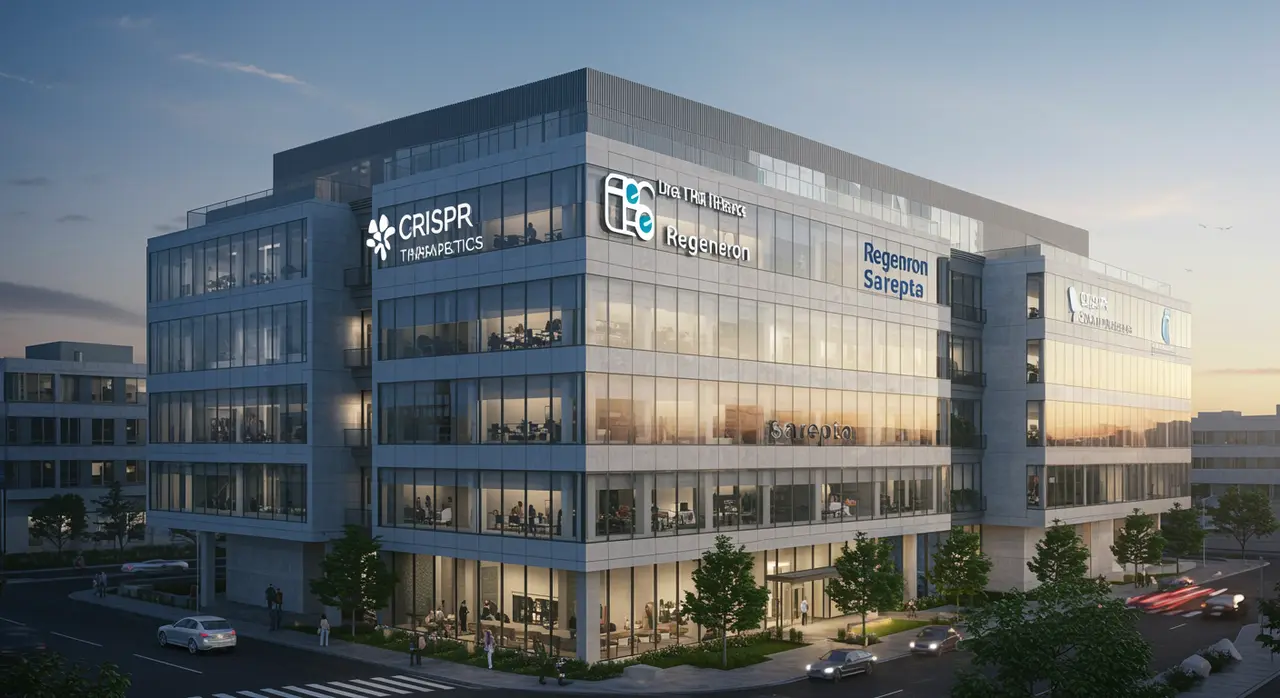Biotech Breakthroughs: CRISPR Therapeutics, Iovance, Regeneron, Sarepta Navigate Promise and Peril
52 views
CRISPR Therapeutics, Iovance Biotherapeutics, Regeneron Pharmaceuticals, and Sarepta Therapeutics are each navigating the intricate crossroads of innovation and market dynamics, with Wall Street’s projections casting a spotlight on their respective fortunes. From groundbreaking gene-editing therapies to cancer treatments, these biotech companies are shaping the contours of modern medicine while grappling with challenges that could either propel or hinder their trajectories.
Biotech Giants in Focus: A Tale of Promise, Peril, and Potential
Few industries embody the duality of high stakes and transformative potential quite like biotechnology. For CRISPR Therapeutics, the approval of Casgevy marked a historic milestone as the world’s first CRISPR-based medicine to enter the market. Designed to treat sickle cell disease and beta-thalassemia, Casgevy heralds a new era of gene-editing therapies with blockbuster aspirations. Yet, its complex administration—a process that includes patient conditioning and autologous cell transplantation—has proven to be a stumbling block for commercial success. While Wall Street foresees a 159% upside for CRISPR Therapeutics’ stock, the company’s long-term viability may hinge on its broader pipeline, which includes promising treatments for type 1 diabetes and cancer. The success of Casgevy could set the stage for a future where gene-editing therapies become more accessible, but for now, the road is far from straightforward.

Iovance Biotherapeutics, meanwhile, has carved its niche in the immunotherapy landscape with Amtagvi, a treatment for melanoma based on tumor-infiltrating lymphocytes (TIL). The therapy’s approval represents a significant leap forward in personalized cancer treatments, yet manufacturing hurdles and scalability concerns loom large. Still, the company’s $164.1 million revenue for 2024 and a Wall Street price target implying a staggering 543% upside underscore the immense optimism surrounding its potential. Key catalysts for Iovance include global regulatory approvals and the expansion of clinical indications, which could position Amtagvi as a cornerstone in oncology. The promise of broader adoption, however, will require overcoming logistical barriers that could otherwise temper its growth.
Regeneron Pharmaceuticals finds itself in a more complex position, balancing the challenges of competition with the opportunities offered by its pipeline. While its flagship product, Eylea—a treatment for age-related macular degeneration—faces mounting pressure from rival therapies, the company’s growth prospects remain robust thanks to Dupixent, a blockbuster drug for asthma and eczema. Additionally, Regeneron’s exploration of gene therapy for genetic deafness signals a bold venture into uncharted territory. Wall Street’s projection of a 50% upside for the stock reflects confidence in the company’s ability to adapt and innovate, even as it navigates an increasingly competitive landscape. Regeneron’s resilience lies in its commitment to diversification, ensuring that it remains a formidable player in the biotech arena.
For Sarepta Therapeutics, the stakes have rarely been higher. The company’s gene therapy for Duchenne muscular dystrophy, Elevidys, was touted as a potential game-changer until a patient death cast a shadow over its prospects. The incident has raised questions about the therapy’s safety profile, injecting uncertainty into Sarepta’s future. Wall Street, however, remains cautiously optimistic, projecting a 182% upside for the stock contingent on further developments. Sarepta’s ability to rebound will depend on its transparency, rigorous safety protocols, and the broader acceptance of gene therapies in the medical community. While the promise of Elevidys remains tantalizing, the risks associated with its development underscore the volatile nature of biotech innovation.
The broader implications of these developments extend beyond individual companies, offering a lens into the evolving dynamics of the biotech sector. Each of these firms exemplifies the delicate balance between scientific breakthroughs and commercial viability, underscoring the complexities of translating cutting-edge research into accessible treatments. Investors, too, face their own set of challenges, navigating a landscape that promises high rewards but demands careful risk assessment.
From a societal perspective, the advancements represented by these companies signal a profound shift in how diseases are treated, managed, and potentially cured. Gene-editing therapies like Casgevy have the potential to redefine the treatment paradigm for genetic disorders, while immunotherapies such as Amtagvi offer hope for more personalized cancer care. Regeneron’s exploration of gene therapy for genetic deafness could open new doors for addressing conditions previously deemed untreatable. Yet, these innovations also bring ethical considerations to the forefront, particularly in the realm of gene editing and the long-term implications of altering human DNA.
As the biotech industry continues to evolve, the interplay between innovation, regulation, and market forces will remain a defining feature. For CRISPR Therapeutics, Iovance Biotherapeutics, Regeneron Pharmaceuticals, and Sarepta Therapeutics, the road ahead is fraught with challenges but brimming with potential. Whether these companies succeed in turning their scientific prowess into sustainable growth will depend not only on their ability to navigate immediate hurdles but also on their vision for the future of medicine. In this high-stakes arena, the promise of transformative therapies must be matched by the pragmatism required to bring them to the patients who need them most.